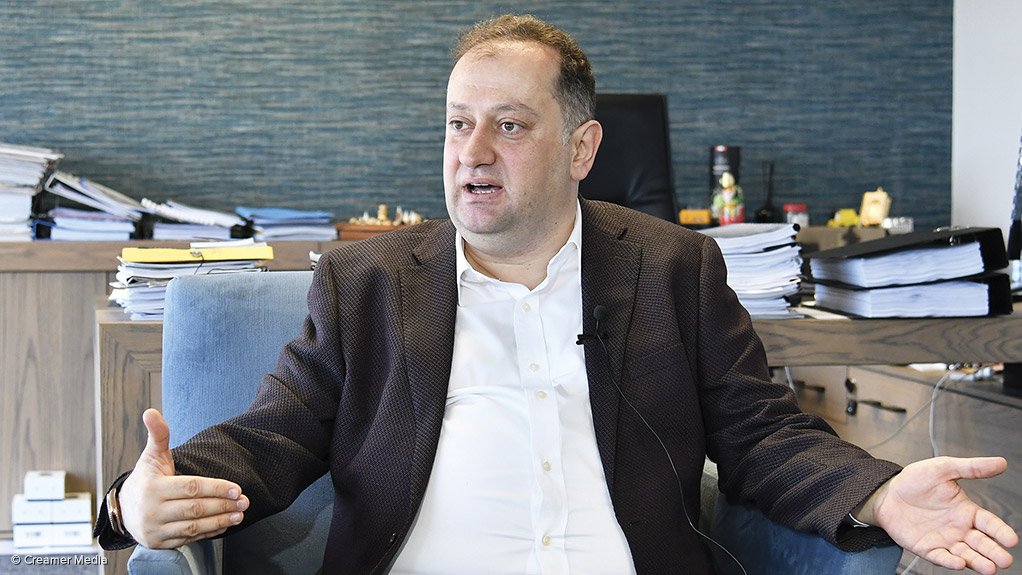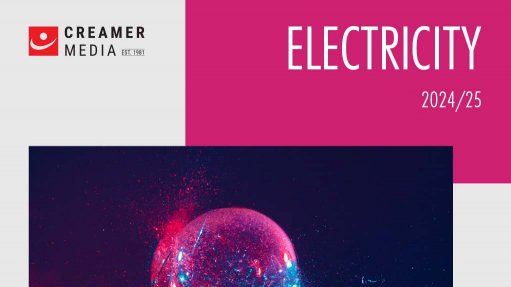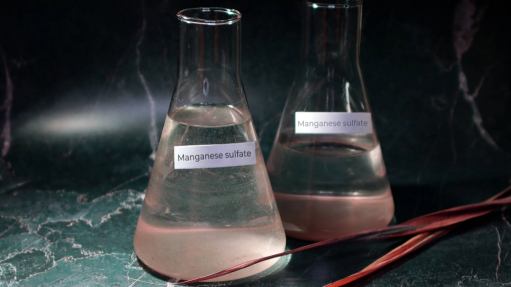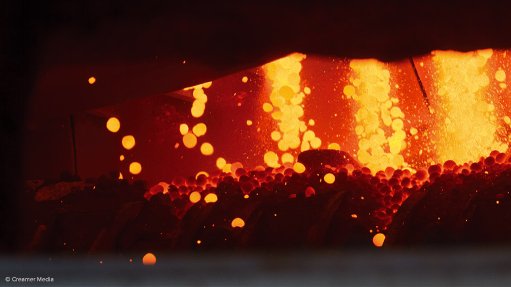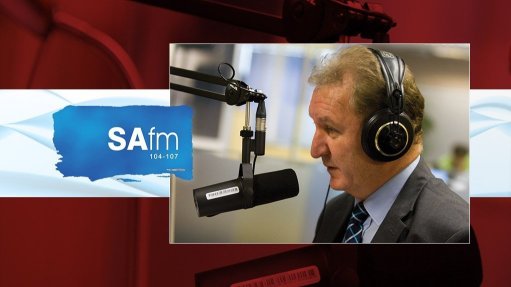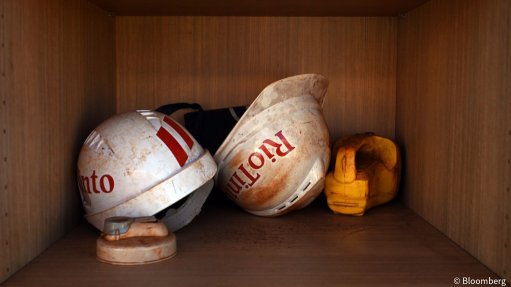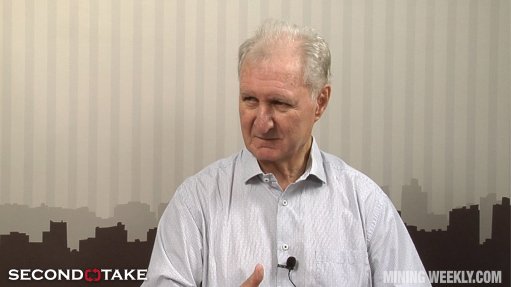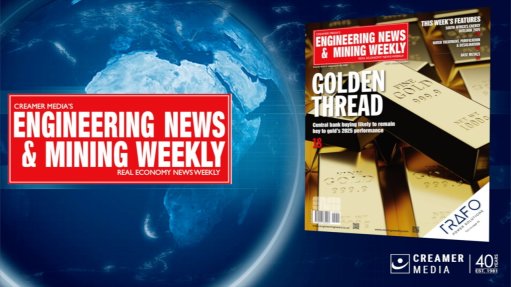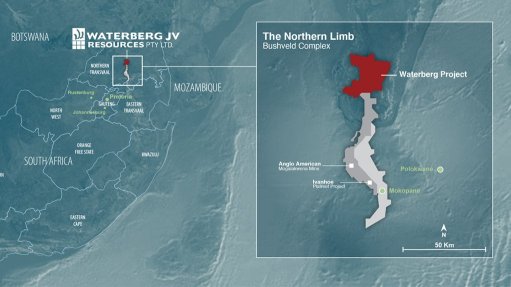Menar outlines coal project pipeline, manganese diversification, job creation, community development
R7bn coal project pipeline to add 5 600 jobs
Private investment and management company Menar is planning to invest R7-billion in coal projects from now until 2022.
These projects will create 5 600 jobs and contribute to the local economies of several needy areas.
They will also help to ensure that South Africa’s State-owned electricity utility Eskom has options to buy suitable coal at the right price.
The jobs within this project pipeline have the potential to elevate Menar’s total employee complement to 9 400, from the current 3 800, by the end of 2022.
These investments could prove crucial in an environment in which banks are not providing capital for coal mining.
Menar controls and manages Canyon Coal, Zululand Anthracite Colliery, Kangra Coal and Sitatunga Resources. Canyon, which operates collieries and processing plants in the Mpumalanga and Gauteng provinces, is also involved in exploration projects in various parts of the country.
At this stage of its growth phase, Menar does not distribute dividends. Instead, it uses that money in the business to create new mines. The growth strategy has included starting with small deposits and then acquires large, long-life deposits.The only outside funding it makes use of is equipment fundingprovided by equipment manufacturers.
All the cash generated within the business is channelled back into the business to develop new projects.
It engages in concurrent mine rehabili-tation and advances with environmental authorisation and water-use licencing. It runs lean operations that can continue when coal prices are low.
Menar expects to be producing 20-million tons of coal from 2021/22 and is prepared to offer Eskom all the coal it produces, depending on Eskom’s
needs.
“It’s critical to have coal mines because by 2030, according to the Integrated Resource Plan, Eskom will still have 33 000 MW of coal-fired power capacity, requiring about 100-million to 110-million tons of coal,” says Menar MD Vuslat Bayoǧlu.
Menar’s strategy is to focus on developing all its coal projects while diversifying into other minerals.
In 2019, it ramped up Canyon’s Khanye colliery, in Bronkhorstspruit, which is now producing 2.4-million tons of coal a year and employing 400 people.
The completion of Khanye was followed by the development of the Phalanndwa colliery extension project, also in Mpumalanga, which is targeting coal production of 1 440 000 t/y.
Khanye and the 200-job Phalanndwa extension required investments totalling about R1-billion.
Meanwhile, in 2020, Menar plans to begin work on the R1.5-billion Palmietkuilen project, which will create jobs for 800 people.
It also wants to make a first-quarter start at the De Wittekrans project, which will create 400 jobs. De Wittekrans is an opencast and underground project with a 24-year life-of-mine located south of Hendrina, in Mpumalanga, and will require an investment of R600-million for developing the opencast mine and the relevant infrastructure. The project is based on run-of-mine production of 300 000 t a month.
A start is also planned next year at the Riversdale Anthracite Colliery project, in Vryheid, KwaZulu-Natal. This project, which is awaiting a water-use licence, will attract an investment of about R300-million and employ about 200 people in what is an old coal/anthracite mining area, where most of the mines are closed and an insufficient number of jobs are being created.
In 2021, a start is expected at Witfontein, an underground coal project, located north-west of Bethal, in Mpumalanga, which will employ about 500 people and require an investment of about R1-billion.
Also in 2021, the 800-employee, seven-million-ton-a-year Springfield opencast coal project is expected go ahead in Vereeniging, 23 km from Eskom’s Lethabo power station.
All the projects in the project pipeline have social and labour plans and opportunities for communities.
“If you pay R20 000 a month per person, with 800 jobs, you’re creating a R16-million economy immediately,” Bayoǧlu points out. “So, the rate at which we receive regulatory approvals to start the job-intensive operations is dependent on the seriousness with which the government supports investments that create jobs. We are hopeful.”
“We’re focusing on what we have and we’re developing these assets. Then, we’d also like to look at other minerals, such as manganese, nickel and cobalt as
well as some copper projects in South Africa and the Democratic Republic of Congo, to diversify the business, dilute coal and then look at how we can grow our portfolio of projects in minerals other than coal,” Bayoǧlu outlines.
Menar has a nickel/cobalt project in Turkey and is looking at a gold project in Kyrgyzstan.
Menar’s priority is to offer all the coal it produces to Eskom
Hands-on Menar is intent on supporting Eskom in every way it can.
State-owned power utility Eskom’s debt was more than R454-billion at the end of September and its interest payments are poised to balloon in the current financial year to R38-billion, making them the utility’s second-largest cost item after coal procurement, which is expected to be R55-billion.
“Our priority is to offer Eskom everything we have. The coal that we’re mining is this country’s mineral and it has to first serve this country’s interests, then it can go to export markets.
“Obviously, Eskom’s success is very close to our hearts and minds because if Eskom is in trouble, the country as in trouble,” says Bayoǧlu.
Eskom is taking steps to commission its modern new Medupi and Kusile power stations fully, retire old power stations
and plan the way forward.
President Cyril Ramaphosa wrote in a recent ‘From the Desk of the President’ newsletter that the problems with the construction of Medupi and its ‘twin,’ Kusile, accounted for much of the financial crisis at Eskom.
Once Medupi’s design and construction problems are corrected, it will add 4 700 MW into the national grid, producing enough power in a year to meet the electricity needs of more than a million people.
Bayoǧlu expects renewables to add a lot of value to the power market, especially solar and wind, and perhaps some gas options.
“We are very supportive of having more renewables in the world and also in South Africa. It will happen, but it will take time,” he cautions, which is why Menar’s
immediate focus is to help meet Eskom’s need for appropriate and reasonably priced coal.
New Eskom CEO Andre de Ruyter, who worked for coal-to-liquids company Sasol for more than 20 years, took over the reins of the utility on January 15 in an example-setting way, by taking office at a salary below that of the current compensation package.
“I think the new CEO is going to have very busy days when he starts in January and we wish him good luck because we want him to be successful,” says Bayoǧlu, who is prepared to transact with Eskom on an open-book, fixed-price basis, or on whatever basis is most suitable for the utility.
Currently, Eskom has three kinds of coal-purchasing arrangements:
• cost-plus contracts, which generally endure for the life of a mine or the life of a power station being supplied;
• fixed-price contracts, which are also long term; and
• spot-price contracts, which are of shorter duration.
Critics suggest that Eskom’s current coal-pricing models need to be reviewed, to render them more transparent and less reliant on personal negotiation, which will put an end to different prices being paid for the same product.
A coal indexing solution has been suggested, but the challenge with indexing is the high level of liquidity required.
Bayoǧlu expresses the view that Eskom will likely require a unique model, which can conceivably be arrived at through a consultative process with South Africa’s coal producing industry.
Water-use licence for Menar manganese project expected in Q2
Bayoǧlu believes that South Africa is not getting what it should out of its world-leading manganese endowment, and would like to see manganese marketing taking its cue from iron-ore marketing, to ensure that South Africa benefits more from manganese than it is currently.
Last year, Menar acquired East Manganese, in the Northern Cape, through its mining development sub-sidiary Sitatunga Resources. A water-use licence for East Manganese is expected in the first quarter of 2020.
While the move, with the Northern Cape’s high temperatures and open spaces, is also presenting potential renewable-energy possibilities, the drastic fall in the price of manganese is currently a major concern.
“It’s something South Africa has to talk about, because 18 months ago the manganese price was $8.5/manganese unit, which is about $285/t. Currently, it’s even less than $100/t – it’s $2.5/manganese unit. Most of the manganese mines, especially small and medium-sized mines, are unprofitable. They’re losing.
“Manganese is a critical mineral in steelmaking and also in battery-making. So, actually we can do better in manga-nese by understanding the markets and not flooding the markets,” says Bayoǧlu, who would like to diversify further into manganese.
Elaborating on the potential of Menar self-generating renewable energy, he adds: “Because we’re in manganese now and we have land in the Northern Cape, we might consider putting solar panels in the Northern Cape and then having a ‘wheeling’ agreement with Eskom to send power to Middelburg or Delmas or Bronkhorstspruit.”
Wheeling – the transportation of electricity from within an electrical grid – would facilitate power being sent to Menar’s coal centres in Mpumalanga, where the lack of land for solar panels put paid to an earlier study into the feasibility of building a 3 MW renewables plant in Middelburg.
Interestingly, Menar, which supplies anthracite to the US and Vietnam, is considering more anthracite projects, as well as coking coal projects. Anthracite and coking coal are used mainly for metallurgical purposes.
Currently, Menar, which has a coal reserve base of 1.3-billion tons, produces about 10-million tons of coal a year and one-million tons of anthracite a year.
Headquartered in Luxembourg but overwhelmingly active in South Africa, Menar has been operational for 15 years, five years of which have been characterised by a close working relationship with the large globally active Swiss trading company Mercuria.
Comments
Press Office
Announcements
What's On
Subscribe to improve your user experience...
Option 1 (equivalent of R125 a month):
Receive a weekly copy of Creamer Media's Engineering News & Mining Weekly magazine
(print copy for those in South Africa and e-magazine for those outside of South Africa)
Receive daily email newsletters
Access to full search results
Access archive of magazine back copies
Access to Projects in Progress
Access to ONE Research Report of your choice in PDF format
Option 2 (equivalent of R375 a month):
All benefits from Option 1
PLUS
Access to Creamer Media's Research Channel Africa for ALL Research Reports, in PDF format, on various industrial and mining sectors
including Electricity; Water; Energy Transition; Hydrogen; Roads, Rail and Ports; Coal; Gold; Platinum; Battery Metals; etc.
Already a subscriber?
Forgotten your password?
Receive weekly copy of Creamer Media's Engineering News & Mining Weekly magazine (print copy for those in South Africa and e-magazine for those outside of South Africa)
➕
Recieve daily email newsletters
➕
Access to full search results
➕
Access archive of magazine back copies
➕
Access to Projects in Progress
➕
Access to ONE Research Report of your choice in PDF format
RESEARCH CHANNEL AFRICA
R4500 (equivalent of R375 a month)
SUBSCRIBEAll benefits from Option 1
➕
Access to Creamer Media's Research Channel Africa for ALL Research Reports on various industrial and mining sectors, in PDF format, including on:
Electricity
➕
Water
➕
Energy Transition
➕
Hydrogen
➕
Roads, Rail and Ports
➕
Coal
➕
Gold
➕
Platinum
➕
Battery Metals
➕
etc.
Receive all benefits from Option 1 or Option 2 delivered to numerous people at your company
➕
Multiple User names and Passwords for simultaneous log-ins
➕
Intranet integration access to all in your organisation



